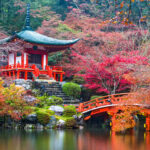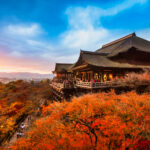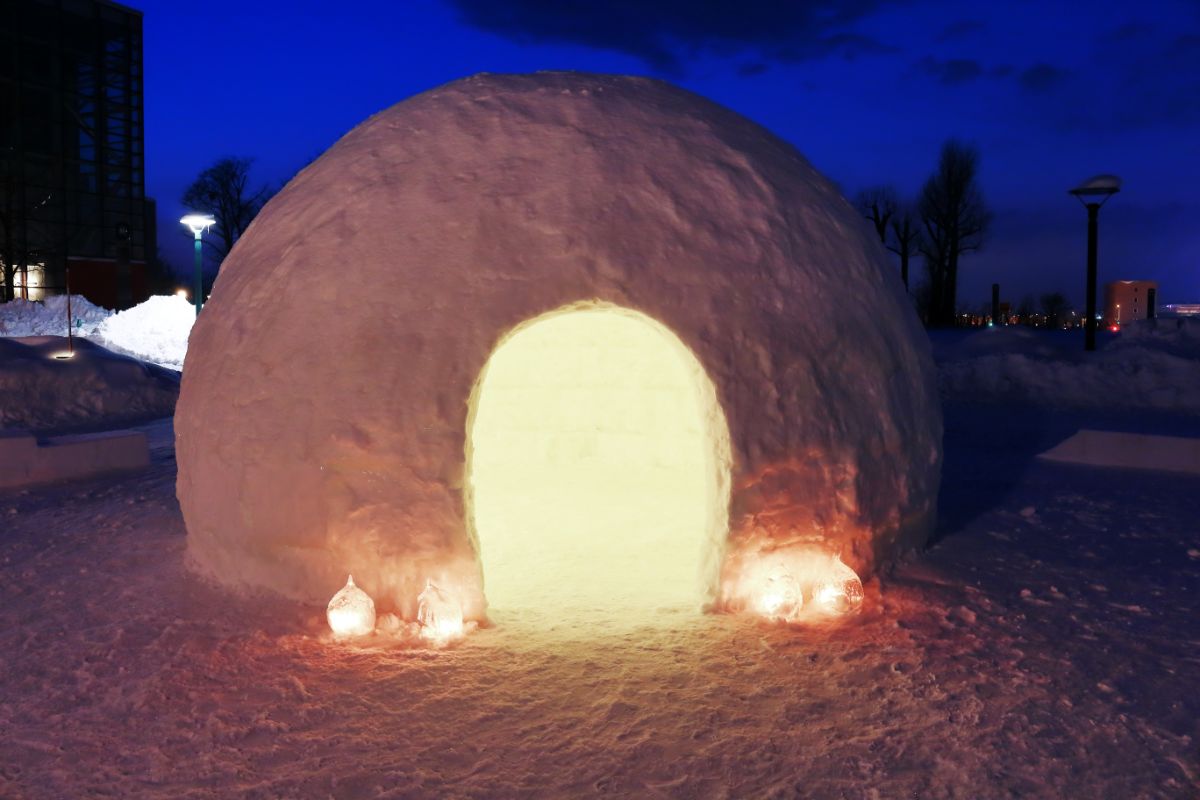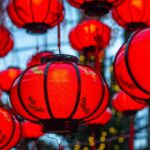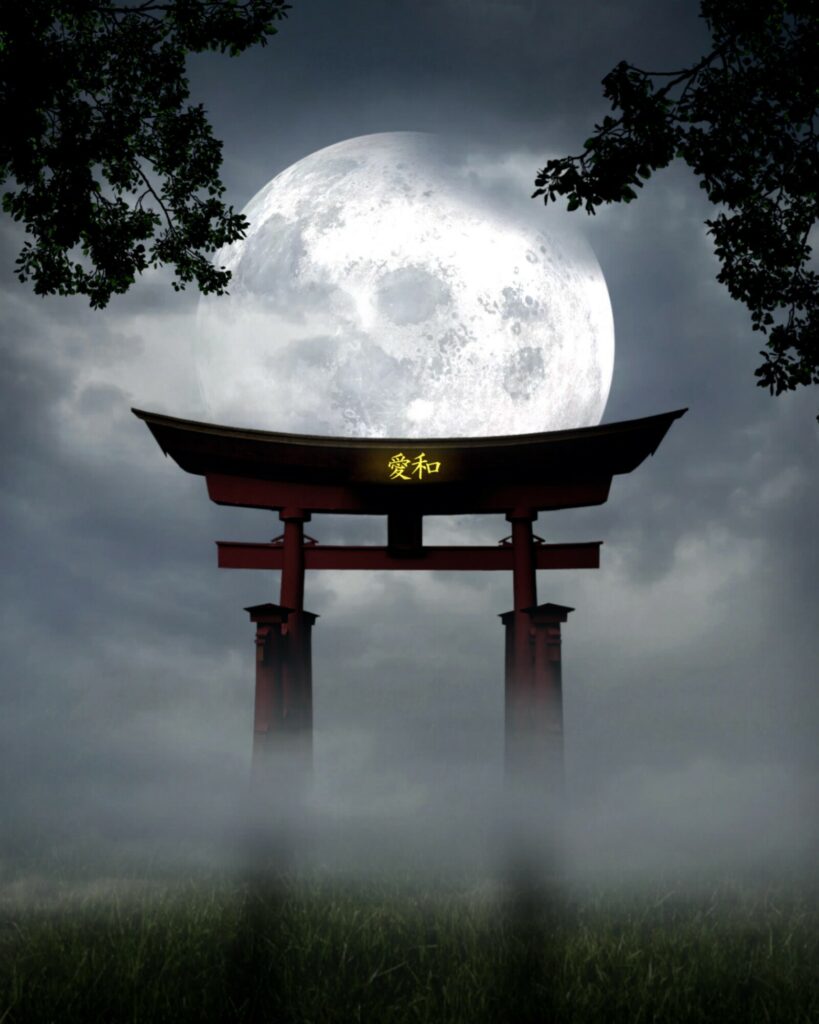
Autumn festivals are a staple in cultures around the world. Traditionally, festivals during the fall months celebrate successful harvests and offer gratitude to the gods for another year of life.
In Japan, the Autumn Moon Festival celebrates agricultural success and pays special homage to the moon. Many important Japanese traditions coincide with the Autumn Moon Festival, and attending this festival is an intimate way to learn more about Japanese culture and tradition.
If you’re planning a trip to Japan, be sure to consider adding this significant festival to your itinerary. Keep reading to learn more.
What Is the Autumn Moon Festival?
Called Tsukimi in Japanese, the Autumn Moon Festival is a deeply revered part of Japan’s culture. Early Japanese historians noted that the moon is especially bright during the autumn months. People were encouraged to go outside and view the moon and give thanks for abundant summer crops.
During Japan’s Heian period (794 to 1185 CE), citizens celebrated the first Autumn Moon festivals. However, it was the Chinese people who first gathered to honor the harvest moon. The Chinese celebrations began around 1046 BCE during the reign of the Zhou Dynasty.
Initially, the Autumn Moon Festivals were strictly for Japan’s elite. They would recite flowery poetry, offer gifts to the gods, celebrate with elaborate banquets and take boats out to bask in the moon’s glow on the water.
During the 17th century, commoners began celebrating the occasion as well. They embraced the festival as a time for personal reflection and giving thanks for their health and prosperity.
Today, the Autumn Moon Festival is one of the most popular festivals in Japan. It is a fantastic way for visitors to learn more about Japanese cultural traditions.
When Does the Autumn Moon Festival Take Place?
To understand more about how many eastern cultures mark the passing of time, you need to learn more about the lunar calendar as opposed to the Gregorian calendar, which focuses on solar patterns. These calendars were both highly influential on the cultures that used them.
The Lunar Calendar and the Gregorian Calendar
The lunar calendar was much more important to ancient civilizations. Farmers marked the phases of the moon to gauge the passing of time and the change in seasons. Agrarian societies based their planting and harvesting schedules on the moon’s phases.
In 604 CE, Japan created its own lunar calendar based on a similar calendar used in China.
In contrast, the Gregorian calendar marked the passing of time by focusing on the sun. The Gregorian calendar was introduced in 1582 CE and replaced the Julian calendar, used by western societies since 45 BCE.
The Gregorian calendar placed emphasized the vernal and autumnal equinoxes and the calender went through many changes in pursuit of accuracy. Months had unequal numbers of days and the calendar’s creators added an extra day every four years.
The lunar calendar starts with a new moon each month, marks the middle of the month with the full moon and ends with the next new moon.
While Japan did adopt the Gregorian calendar in 1873, the lunar calendar is still a vital part of Japan’s culture and tradition.
Defining Holidays by the Lunar Calendar
Many cultures still use the lunar calendar to mark holidays. For instance, Easter and Ramadan occur on different days each year based on the lunar phases. In Japan, the Autumn Moon Festival occurs on the fifteenth day of the eighth lunar month.
Traditionally, the moon festival almost always takes place in September but may occasionally carry over to early October.
Since the lunar months start and end with a new moon, we also know the full moon occurs in the middle. This autumn moon is significant and cultures worldwide celebrate this auspicious time in various ways.
Autumn Moon Festival Traditions
Japanese festivals are taken very seriously. However, as Japan continues to grow as a thriving, modern society many old traditions are now woven with new traditions, resulting in a holiday that appeals to people of all ages.
Festival Decorations
Decorating one’s home is an essential part of festivals in Japan, but decorating for the Autumn Moon Festival is especially important. Pampas grass, originally used as animal feed or roofing material, is displayed around the exteriors of homes and other buildings.
Since Pampas grass ripens as the summer days begin to wane, it’s a symbolic nod to the beginning of autumn. The long stalks of grass also frighten evil spirits and serve as an offering to the moon god.
Festival Offerings
Pampas grass is an important offering during the moon festival, but it’s not the only one. Individuals and families will visit their local temple or shrine to give additional offerings, usually in the form of incense. Dressing in traditional kimono is a must during this time.
Festival Food
Food has a very special meaning during the Autumn Moon Festival. Since the festival means to offer thanks for a good harvest, offering food shows that families have a bountiful crop and can afford to give extra to the gods.
During Tsukimi, food harvested in the fall is the star of the show. Persimmons, pears, grapes, chestnuts, and sweet potatoes are all eaten and offered during this festival.
You’ll also find that eggs are popular as well because they’re similar in color and shape to the moon. You’ll also find Dango, which are small, white balls of rice for the same reason.
Festival Lore
The rabbit has a special place at the Autumn Moon Festival. In Japanese culture, the craters of the moon form the shape of a rabbit. Therefore, during tsukumi, you’ll find many foods molded into the shape of the rabbit, but the most popular is mochi, the sweet, sticky rice cake everyone loves.
The Best Places in Japan to Experience the Autumn Moon Festival
Events in Japan can be the highlight of a traveler’s visit, and an event like the Autumn Moon Festival can make your trip extraordinary. Tsukumi is celebrated in small villages and big cities across the country. If you’re traveling through a small town during Tsukumi, you’ll be welcomed and invited to participate in festival activities.
However, Japan’s cities boast the biggest and most extravagant Autumn Moon Festival celebrations.
Kyoto
Kyoto is spectacular at any time of the year. Still, during Tsukumi, moon-viewing celebrations are held across the city.
Osawa Pond
Elegance and tradition are on full display during the celebrations at Kyoto’s Osawa Pond. Rent a boat to gaze at the moon over the water and participate in a traditional tea ceremony.
Hirano Shrine
Enjoy dance and music performances at Hirano Shrine while you watch the moon with hundreds of Kyoto residents. Food and souvenir stalls give you that chance to try some traditional Tsukumi treats and take home something to remind you of the special occasion.
Tokyo
Japan’s capital city goes all out for Tsukumi, and you’ll find celebrations all over Tokyo. But if you want to experience the biggest and the best, plan to visit one of these locations.
Tokyo Tower
This iconic building is the second tallest structure in Japan. Every year during the Autumn Moon Festival, city officials cover the building with red lights to highlight the bright, white moon. If you’re feeling up to it, you can climb the 600 steps to the top for a breathtaking view of the city.
Tokyo Skytree
No matter what time of year, the Tokyo Skytree should be on every visitor’s itinerary. At 634 meters, it’s Japan’s tallest building. During Tsukumi, visitors can visit the top for an unobstructed view of the moon and enjoy musical performances to set the mood.
Hyogo
Located near Kobe, Hyogo is one of Japan’s most celebrated cities. Its architecture alone is worth a visit, but Hyogo transforms during Tsukumi and should definitely be on your itinerary.
Himeji Castle
Himeji Castle is the oldest and largest castle in Japan. It was built in the mid-1300s and became a UNESCO World Heritage Site in 1993. During the Autumn Moon Festival, the castle lights up in celebration. Taiko drum performances, sword dancing and countless food and drink stalls make the castle the perfect place to experience Tsukumi.
Ise City, Mie Prefecture
If you prefer getting off the beaten path and visiting ancient Shinto shrines, a trip to Mie Prefecture is the perfect destination for Tsukumi. A bus from Osaka takes about three hours. A train and bus from Nagoya take one and a half to two hours.
Ise Grand Shrine
In Shintoism, the Ise Grand Shrine is one of Japan’s most important places of worship. Its history and architecture alone make it a must-see for visitors to this part of the country but visiting the shrine during the Autumn Moon Festival is an experience you won’t forget.
As Ise Shrine is still an active place of worship, not all parts of the complex are open to the public. However, during Tsukumi poetry readings, musical performances, and traditional food and drink welcome visitors to celebrate this auspicious holiday.
Plan Your Visit to Japan Today
As a tourist destination, Japan truly offers something for everyone. But Japan’s traditional festivals showcase unique aspects of the country’s history, religion, and folklore.
Browse some of our other travel articles and start planning your visit to the Autumn Moon Festival today.
- 12 Things to Do When Visiting Japan - October 7, 2022
- 13 Reasons to Move to Japan - October 7, 2022
- A Guide to Japanese New Year Traditions - October 6, 2022

